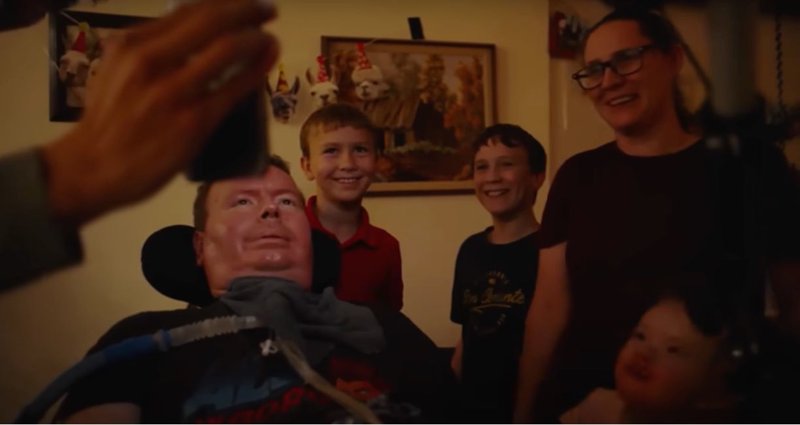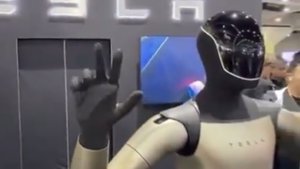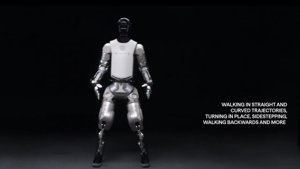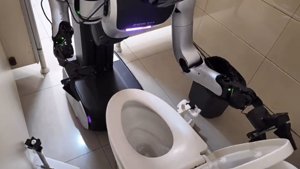From Science Fiction to Reality: Bradford Smith Controls Technology with His Mind
When we used to joke about mind control being science fiction, Bradford Smith is now making us eat those words—quite literally using just his thoughts.
In a remarkable cybernetic breakthrough, Bradford Smith, who lost the ability to move or speak due to ALS, has received a Neuralink chip that allows him to create text simply by thinking.
The system is enhanced by Grok AI, which completes his thoughts like a mind-reading autocorrect, while another AI clones his actual voice—ensuring that when he “speaks,” it sounds authentically like him.
TL;DR: He’s texting, talking, and essentially wielding Jedi-like powers—all with his mind.
At this rate, an exosuit upgrade seems inevitable. But let’s be honest—if you could control Netflix with your thoughts, would you ever leave the sofa?
Meet Mr. Smith: When Eye Tracking Meets Its Match
Here’s the reality about assistive technology: it’s typically clunky, temperamental, and about as user-friendly as a Windows 95 error message. Brad Smith knows this all too well. Before Neuralink, he communicated through eye gaze technology—imagine trying to compose a novel by staring at each letter until a tracker decided you really, really meant it.
Brad Smith is the third patient to receive Neuralink’s brain-computer interface implant. Smith has suffered from ALS for several years and agreed to be part of Neuralink’s clinical trial in the hopes of being able to communicate better and interact more with the outside world.
“I am so excited for the implant because I hope to control the computer without my eyes,” Brad explained through his eye gaze system. “Do you know how hard those simple things are with eye gaze? I hope you never have to find out.”
And honestly? After watching this documentary, we hope so too.
The Tech That Makes Cyborgs Jealous
The N1 implant isn’t your grandfather’s brain surgery. We’re talking about threads that are 1/5 the width of a human hair—so delicate that Neuralink had to build a surgical robot just to place them. Because apparently, even the steadiest surgeon’s hands aren’t steady enough for literal brain threading.
The implant sits in the motor cortex, essentially hijacking the neural pathways that once controlled Brad’s hands. When he imagines moving his hand over a ball or shifting gears in a car, the computer translates those intentions into cursor movements. It’s like having a universal translator for thoughts—if thoughts were specifically about pointing and clicking.
But here’s where it gets truly fascinating: the learning curve isn’t just on Brad’s side. The AI is learning his brain patterns, creating a personalised neural dictionary. Every session makes the connection stronger, more intuitive. It’s less “man versus machine” and more “brain meets silicon soulmate.”
Breaking Free from the Darkness (Literally)
Imagine this: you live in sunny Arizona but keep your house darker than a Metallica concert because your communication device throws a tantrum at the first hint of natural light. That was Brad’s reality with eye gaze technology.
“There’s a lot of sun a lot of the day and he’s without communication if we go outside,” explains Brad’s wife, Tiffany. Translation: family outings meant choosing between communication and, well, going outside like a normal human being.
Now Brad calls his new ability “telepathy”—and honestly, if it walks like telepathy and talks like telepathy, who are we to argue with the semantics? The man can communicate poolside, at football matches, basically anywhere that isn’t a sensory deprivation chamber.
When Grok Becomes Your Wingman
Here’s where things get really interesting. The Neuralink team didn’t just stop at “think to type.” They added an AI chat assistant that essentially becomes Brad’s conversational co-pilot. It’s like having the world’s most advanced autocomplete, but for entire thoughts and personalities.
“I am definitely happy to have anything to keep me in the conversation,” Brad notes. “My problem is that I enjoy the ridiculous answers it gives me.”
The AI can adjust tone—serious, joking, angry—depending on what Brad wants to convey. Imagine having an AI that doesn’t just finish your sentences but finishes them in whatever mood you’re going for. It’s like having a digital personality amplifier.
But here’s the kicker: after years of eye gaze communication, where every word was a laborious process, Brad admits he “spent years trying to decide what to say in a conversation.” Now? He’s got an AI wingman helping him keep up with the conversational flow. The future is weird, and we’re here for it.
The Voice That Time (and AI) Remembered
In what might be the most emotionally powerful tech development of the year, Brad’s voice has been digitally resurrected using AI from 11 Labs. Using old phone recordings—the digital equivalent of old family photos—they’ve recreated a voice that sounds remarkably like pre-ALS Brad.
“It is actually weird to hear my voice after years of not hearing it,” Brad admits. “I always hated to hear my voice on recordings but I don’t mind it now.”
There’s something profoundly moving about technology giving someone back their literal voice. It’s not just communication—it’s identity, personality, the acoustic fingerprint that makes you you.
Mario Kart: Now With 100% More Telepathy
If you needed proof that we’re living in the future, here it is: Brad plays Mario Kart with his children using nothing but brain power. No controllers, no eye tracking, just pure thought-to-digital-racing-car translation.
“Dad’s moving! Dad’s in sixth right now,” one of his children exclaims excitedly during a Mario Kart race. These aren’t just gaming sessions—they’re family bonding moments that were literally impossible before.
The technology has restored something beyond communication: normality. Dad playing video games with the kids is such a fundamentally human experience, and watching it happen through brain-computer interface feels like witnessing a small miracle wrapped in Nintendo packaging.
What This Really Means (Spoiler: It’s Huge)
Elon Musk’s pre-surgery FaceTime call with the family wasn’t just a publicity stunt—it was a preview of what happens when Silicon Valley’s biggest dreamer meets real human need. “I hope this is a game changer for you and your family,” Musk said, and for once, the hyperbole seems justified.
But let’s zoom out for a second. This isn’t just about one family or one medical condition. We’re witnessing the birth of direct neural interfaces that actually work in the real world. Not in a lab, not in controlled conditions, but in an Arizona living room with children running around and Mario Kart tournaments.
As Brad puts it: “If Neuralink succeeds maybe nobody will have to learn that [the difficulty of eye gaze communication] again.”
Life 2.0: The Brad Smith Edition
“I am absolutely doing more with Neuralink than I was doing with eye gaze,” Brad reflects. “I have been a Batman for a long time but I go outside now.”
The Batman reference is both heartbreaking and hilarious—a superhero who operates from the shadows, not by choice but by technological limitation. Now? He’s out in the Arizona sunshine, communicating with the power of thought alone.
The story isn’t without its complexities. Brad acknowledges it means more work for his wife Tiffany, whom he describes as “the greatest person I’ve ever known.” Technology can restore abilities, but it doesn’t erase the reality of caregiving, of family dynamics, of the emotional labour that surrounds chronic illness.
Still, as Brad says: “Life is good.”
FAQ: The Mind-Reading Questions You’re Actually Thinking
Q: Wait, is this actually telepathy or just really good tech? A: Technically, it’s a brain-computer interface that reads neural signals. Practically? If Brad can think a command and make it happen, call it whatever makes you comfortable. The result is the same: mind control that actually works.
Q: Can Neuralink read all of Brad’s thoughts? A: No, it only reads specific motor cortex signals—the part of the brain that controls movement. Your secret thoughts about your boss are still safe. For now.
Q: How does the AI know what tone Brad wants? A: The system learns from context and can be adjusted in real-time. Think of it as having a very smart autocorrect that understands not just what you want to say, but how you want to say it.
Q: What happens if the technology breaks down? A: Brad still has his eye gaze system as backup. It’s like having a smartphone and a landline—the new tech is better, but redundancy keeps you connected.
Q: Is this the beginning of human-AI merger? A: We’re witnessing the early stages of seamless human-computer interaction. Whether that’s “merger” or just really advanced assistive technology depends on your philosophical outlook and sci-fi tolerance.
Q: When will this be available to everyone? A: Neuralink is still in clinical trials. This isn’t hitting the Apple Store anytime soon, but the proof of concept is undeniably real.
The full documentary featuring Brad Smith, the Neuralink team, and Elon Musk is available at Core Memory, showcasing never-before-seen footage of this groundbreaking journey. As always, RoboHorizon Magazine will continue following these developments—because when mind control becomes reality, somebody needs to document the weirdness.
The exosuit upgrade may indeed feel inevitable, but for now, the ability to think a text into existence and have AI complete your thoughts while speaking in your own voice? That’s already pretty close to magic.
And if that’s not worth celebrating with a Mario Kart victory lap, we don’t know what is.






